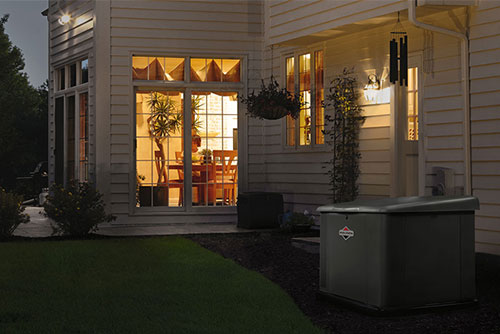What Size Gas Line For a Standby Generator?
Written on: May 6, 2024
Pico Has Answers to All Your Backup Power Questions
 There’s no denying that more extreme weather patterns lead to more frequent and extended power outages. Here in Texas, we get the full gamut: tornadoes, thunderstorms and hail, hurricanes on the coast, and extreme cold and ice storms. Losing power for two or three hours is annoying, but an outage lasting much longer starts to be expensive, and even dangerous in extreme heat or cold. It’s important to be prepared.
There’s no denying that more extreme weather patterns lead to more frequent and extended power outages. Here in Texas, we get the full gamut: tornadoes, thunderstorms and hail, hurricanes on the coast, and extreme cold and ice storms. Losing power for two or three hours is annoying, but an outage lasting much longer starts to be expensive, and even dangerous in extreme heat or cold. It’s important to be prepared.
If you’re considering adding a standby generator, we’re sure you have questions. Here’s everything you need to know about a piece of equipment that can keep your home and family safe during a power emergency.
What size gas line does a standby generator need?
Gas lines for different equipment are different sizes, and there are a number of factors that dictate what size gas line you’ll need for your generator. Maximum fuel consumption of the generator in cubic feet per hour, gas pressure, and the distance gas needs to travel from the tank to the generator all come into play. The good news is that the expert installers at Pico know how to make all the right calculations to determine the correct size, and hook up your generator so it operates efficiently and reliably when you need it.
What size generator do I need?
There are a wide variety of size options for standby generators, from “essential power” models that will run key equipment such as your refrigerator, heat and lights, to true whole-house generators that can manage the demands of most extra-large homes, even during extended outages. We’ll work with you to determine the best size generator for your home and needs.
How long will a standby generator run?
It depends on the size of your generator—and the size of your propane tank.
Most homes have storage tanks that are 100 to 500 gallons. The average 5000-watt whole-house generator will run for one to two days on a 100-gallon tank. A 500-gallon tank would keep the same generator running for 7 to 10 days.
Bigger generators will run more appliances and equipment, but they will use more propane: Typically, 5,000-watt whole-house generators use about two gallons of propane per hour. The most powerful, 9000-watt generators use three gallons per hour.
Is a standby generator expensive?
While portable generators are less expensive out of the box, they can cost you a lot more in the long run. Just keeping it full during an extended outage will add up quickly, not to mention potentially having to wait on long lines for more gasoline.
On the other hand, while they cost a bit more up front, having a standby generator can help you save money even before the power goes out. Many insurance plans will offer discounts on your homeowner’s insurance plan if you install a standby generator. That’s because, like a security system, a generator helps protect your property. Speaking of security systems, a standby generator can keep yours operating during an outage, protecting your home if you are away.
One more thing to consider: According to Consumer Reports, a properly installed whole-house generator can increase the value of your home by as much as 5%. That’s a great return on your investment, even before you even need to use it.
The Bottom Line
Peace of mind is priceless. But when you do the math, the benefits of a standby generator usually add up to a better deal compared to the expense (and hassle) of a power outage. By keeping even just your essential systems running, a standby generator can help you avoid the cost of replacing spoiled food, the cost of a hotel room—if you can find one—and if the outage is in winter, prevent pipes from bursting.
Ready to learn more? Contact us today!


 There’s no denying that more extreme weather patterns lead to more frequent and extended power outages. Here in Texas, we get the full gamut: tornadoes, thunderstorms and hail, hurricanes on the coast, and extreme cold and ice storms. Losing power for two or three hours is annoying, but an outage lasting much longer starts to be expensive, and even dangerous in extreme heat or cold. It’s important to be prepared.
There’s no denying that more extreme weather patterns lead to more frequent and extended power outages. Here in Texas, we get the full gamut: tornadoes, thunderstorms and hail, hurricanes on the coast, and extreme cold and ice storms. Losing power for two or three hours is annoying, but an outage lasting much longer starts to be expensive, and even dangerous in extreme heat or cold. It’s important to be prepared.